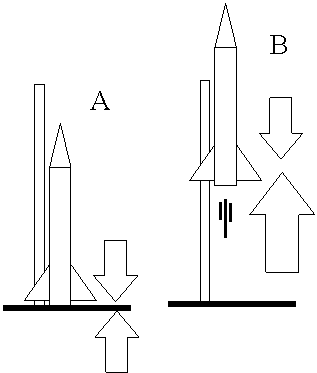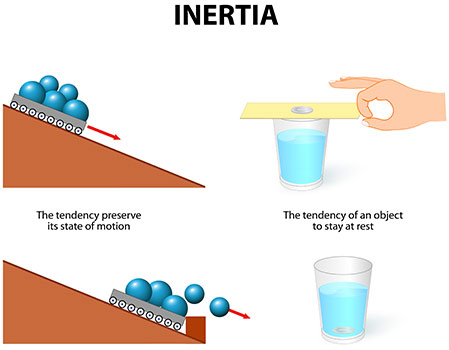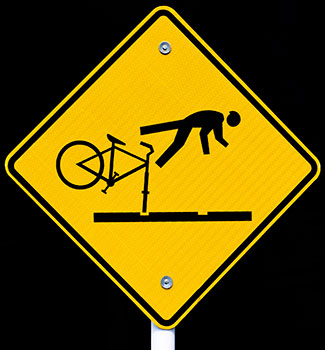Learn
Newton's First Law of Motion
Newton's First Law of Motion states that an object moves at a constant velocity unless an unbalanced force acts on it. This also means that an object at rest will remain at rest unless an unbalanced force acts on it. Watch the video Teachable Moment: Newton's First Law (0:52) to learn more. Login information.
Look at the picture below:

- In diagram A, the rocket is sitting on the launch pad. The weight (force of gravity) of the rocket is exactly opposed by the upward force (the normal force) from the launch pad. These forces oppose each other and result in a zero net force. Since no other force acts on the rocket, it will remain at rest.
- In diagram B, the rocket thrusters exert a force, which overcomes the weight of the rocket. The net force is no longer balanced and the rocket begins to move upward.
Principle of Inertia
Newton's First Law is also referred to as the Principle of Inertia. Inertia is the tendency of an object to resist any change in its motion.

Objects with greater mass have greater inertia. For example, if you were to roll a bowling ball and a tennis ball, it would take more force to stop the bowling ball than the tennis ball because it has more inertia.
You may have noticed road signs like the one below. It warns cyclists of embedded train tracks ahead. A bike tire could be stopped or slowed quickly by the bumps, which could send the cyclist flying forward. This forward propulsion is due to the fact that your body wants to continue moving in the motion. If a car stopped or slowed quickly, your seat belt would jerk you back. However, in a bike, you don't have a seat belt or similar restraint, so your body would continue moving forward because of inertia.

Review
To learn more, review Lesson 1 — Newton's First Law of Motion on Physics Classroom. Be sure to read all 4 parts of the lesson listed below and complete any interactive questions you find.

